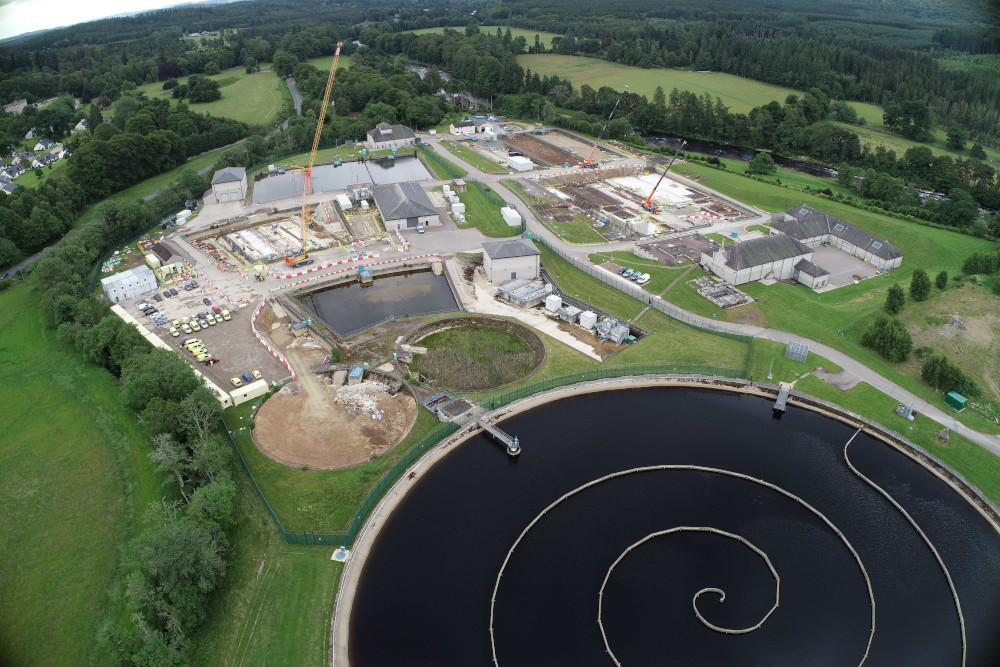Historic Aberdeenshire waterworks to be given £52m revamp
A historic Aberdeenshire waterworks is getting a major £52 million revamp more than 150 years after its construction was hailed a jewel in the crown of engineering success.

The treatment works at Invercannie, Banchory, was opened by Queen Victoria in 1866, to supply the growing 75,000 population of Aberdeen with 27 million litres of water every day.
Legendary engineer James Simpson designed the complete works to divert the remarkably pure water of the River Dee from Cairnton, via a 1.3 mile tunnel to a reservoir at Invercannie, 244ft above sea level.
After passing through sand filters, gravity fed the water through an elliptical brick aqueduct to reservoirs in Aberdeen. The original Victorian intake bed still remains today.
This engineering jewel of the north-east is still the main source of drinking water for the region today – delivering fresh, high quality water for around 300,000 customers.
Now, a two-year project is underway to completely refurbish the existing plant which will be able to deliver 63 million litres of drinking water a day.
A new water storage tank, air filtration plant, and a new pumping station and pipework, are being installed at the existing site by Scottish Water’s alliance partner ESD.
Scottish Water’s 25-year strategic plan, Our Future Together, sets out a commitment to delivering investment in ageing assets such as this Victorian-era infrastructure, ensuring it continues to deliver excellent quality water and contributes to achieving net zero carbon emissions by 2040.
David Lindsay, operations manager at ESD, said: “This significant investment by Scottish Water will help ensure the existing plant at Invercannie has the resilience to continue supplying fresh, great-tasting water to customers in Deeside and surrounding areas for years to come.”
Today, Aberdeen owes the foundation for its modern water supply to the late Mr Simpson, and civil engineering firm Easton Gibb, who tendered a bid of £103,999 to build the waterworks.
London-born Mr Simpson – a government adviser – designed and constructed the waterworks which supplied Windsor Castle under the reign of King George IV, as well as many other royal palaces and major cities across the country.
Up to 1,500 men were employed to build the waterworks and materials used during the construction, included: seven million large bricks; 70,000 tons of waterproofing puddle clay; and 2,500 tons of iron. Around 300,000 cubic yards of earth was excavated for the aqueduct and a further 170,000 cubic yards of earth was used for infilling. Almost 60,000 cubic yards of rock were excavated for the original tunnel from Cairnton.
The oval cross-section brick aqueduct was 3ft 2ins wide, by 3ft 9ins high, and was 19 miles long. In 1932 it was lined with concrete to make it watertight, and a section can still be seen at Invercannie.
As the population grew, more private houses were granted a water supply, and water closets and baths became popular in homes, increasing the demand.
In the 1920s the facilities at Invercannie had to be extended, costing more than £1 million, adding a storage reservoir, three new filters, a second steel and cast-iron aqueduct, as well as a pumping station, main and service reservoir.
Gavin Steel, corporate affairs manager at Scottish Water, said: “The construction of the original Aberdeen Waterworks was arguably one of the city’s biggest undertakings.
“It’s an amazing testament to the engineering excellence of the Victorian era that parts of the original infrastructure at Invercannie are still in use more than 150 years later.
“Scottish Water and ESD are now ensuring the water treatment works will continue to serve communities across both city and shire, far into the future. Our teams are tackling different challenges, including delivering this significant investment safely while continuing to supply world-class drinking water to our customers. We are building with care upon a proud heritage.”


















